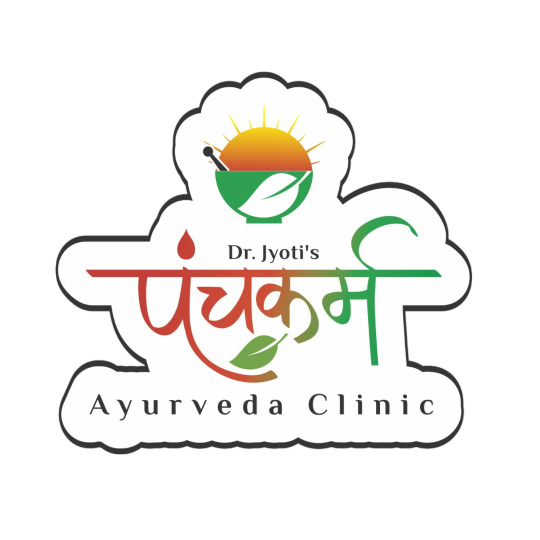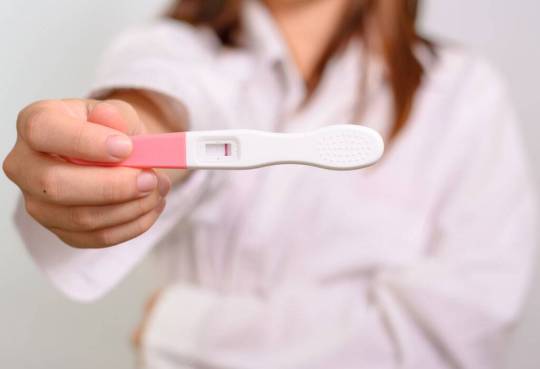#Yoga For PCOS
Text
PCOS Yoga Pose
At The Yoga Guru, we offer specialized yoga training focused on PCOS Yoga Pose to support individuals managing Polycystic Ovary Syndrome (PCOS). By incorporating these targeted PCOS yoga poses into your practice, you can help regulate hormonal imbalances, improve ovarian function, and enhance overall well-being.
0 notes
Text
Fertility Yoga and Diet: Harnessing the Mind-Body Connection for Conception
The journey to conception can be a deeply emotional and sometimes challenging experience for many couples. In today's fast-paced world, stress levels have risen, leading to an increase in fertility issues. While medical interventions and fertility treatments have their place, an ancient practice called Fertility Yoga, combined with a well-balanced diet plan for fertility, offers a holistic approach to improving fertility. By combining physical postures, breathwork, meditation, and nourishing foods, this mindful approach aims to harness the mind-body connection, increasing the chances of conception and make a woman's 9 months pregnancy journey easy. In this article, we will explore the power of Fertility Yoga and the role of a fertility diet in supporting aspiring parents on their path to parenthood.

Understanding the Mind-Body Connection
The mind-body connection is a fascinating concept that highlights the close relationship between our thoughts, emotions, and physical well-being. Studies have shown that stress, anxiety, and negative emotions can directly impact reproductive health and fertility. High-stress levels can disrupt hormonal balance, interfere with ovulation and menstrual cycles, and even reduce sperm quality in men. Fertility Yoga, along with a fertility diet, seeks to address these challenges by helping individuals cultivate inner peace, emotional balance, and overall well-being.
The Role of Fertility Yoga and Diet in Conception
Fertility Yoga, when combined with a fertility diet, offers a comprehensive approach to supporting reproductive health. Let’s delve into the benefits of both practices:
Stress Reduction: Fertility Yoga incorporates relaxation techniques and gentle movements that aid in stress reduction. When complemented with a fertility diet rich in stress-reducing nutrients, like Omega-3 fatty acids found in fatty fish and walnuts, the body’s natural self-healing abilities are enhanced, fostering a more conducive environment for conception.
Hormonal Balance: Certain yoga postures and breathing exercises stimulate the endocrine system, which plays a crucial role in regulating hormones related to fertility. A well-balanced fertility diet with foods that support hormonal health, such as leafy greens, whole grains, and nuts, can further enhance hormone balance, improving ovulation and menstrual regularity.
Blood Circulation: Fertility Yoga postures encourage better blood flow to the reproductive organs, nourishing them with oxygen and nutrients to support optimal functioning. A fertility diet that includes foods promoting circulation, such as citrus fruits, garlic, and ginger, can complement these efforts.
Emotional Support: The emotional toll of fertility challenges can be overwhelming. Fertility Yoga, along with mindfulness practices, provides emotional support and resilience. A fertility diet rich in mood-boosting nutrients like B-vitamins found in whole grains and leafy greens can contribute to emotional well-being.
Couples Bonding: Fertility Yoga can be practiced individually or as a couple, offering partners an opportunity to bond and support each other through the process. Sharing a fertility diet filled with nutrient-dense meals can also create a sense of togetherness and shared goals.
Recommended Fertility Yoga Practices and Fertility Diet
Before starting any new exercise regimen or making significant dietary changes, it’s crucial to consult with a healthcare professional, especially for couples undergoing fertility treatments. Once given the green light, couples can consider integrating the following Fertility Yoga practices and fertility diet tips:
Fertility Yoga Practices:
Supported Bridge Pose (Setu Bandhasana)
Butterfly Pose (Baddha Konasana)
Reclining Bound Angle Pose (Supta Baddha Konasana)
Nadi Shodhana Pranayama (Alternate Nostril Breathing)
Yoga Nidra (Guided Meditation)
Fertility Diet Tips:
Incorporate plenty of fruits and vegetables, especially leafy greens and colorful fruits rich in antioxidants.
Opt for whole grains like quinoa, brown rice, and oats to support stable blood sugar levels.
Include lean proteins like poultry, fish, legumes, and nuts to promote reproductive health.
Consume healthy fats like avocados, olive oil, and nuts to support hormonal balance.
Stay hydrated with water and herbal teas to maintain overall health.
Fertility Yoga, combined with a well-balanced diet plan for fertility, offers a powerful approach to embracing the mind-body connection on the path to conception. While not a substitute for medical treatments, these practices complement traditional methods by promoting overall well-being, emotional balance, and reproductive health. By reducing stress, improving hormonal balance, and enhancing blood circulation, Fertility Yoga and a fertility diet empower aspiring parents to approach their fertility journey with mindfulness and positivity. Remember, each fertility journey is unique, and patience, along with the support of Fertility Yoga and a nourishing diet, can make the conception process a transformative and positive experience.
0 notes
Text
How Does Yoga Help With PCOS Symptoms?
Yoga has become quite the wellness trend in recent decades, but the practice has been around for thousands of years. Although yoga may not be practised as a heavily spiritual experience in today’s gyms, yoga still provides a lot of health and wellness benefits, especially for women who suffer from polycystic ovary syndrome (PCOS).
PCOS is a medical condition that comes along with several uncomfortable and disconcerting symptoms. Women who experience PCOS symptoms may have an irregular cycle or may feel the effects of weight gain. Problems with oily skin and hair are also common for women with PCOS, and infertility is also a concern.
Yoga to the Rescue
Although yoga is not a cure for PCOS, there is some evidence out there that suggests yoga could help combat PCOS symptoms. You should always consult with your doctor first to find out if yoga for PCOS is right for you, but if you’re given the all-clear, practising yoga a few times a week could reduce symptoms. Even if you’re new to yoga, you can still enjoy its benefits by following along with online videos or working with a dedicated yoga instructor.
How Does Yoga Help PCOS Symptoms?
Yoga for PCOS can result in less stress and greater physical wellness. One of the biggest concerns with PCOS is the potential for cardiovascular disease that often follows the condition. Yoga is known to have beneficial effects on cardiovascular health, and when combined with a balanced diet, yoga may also improve strength and flexibility. This can lead to more opportunities to stay active.
Yoga may also help to balance hormones that can be thrown off by PCOS. Women who suffer from this condition may experience an increase in testosterone, but yoga may work to reduce testosterone and increase estrogen. These hormones affect mood, mental well-being, physical health and a woman’s menstrual cycle. By balancing these hormones, yoga may improve PCOS symptoms and lead to greater satisfaction with life.
Disclaimer: The above is not to be taken as medical advice. Consult with your doctor to learn the risk and benefits of engaging in yoga with PCOS.
Read a similar article about insulin resistance from PCOD here at this page.
0 notes
Text
Spiritual wellness is the main concern for beings – Yoga is the key - Your Assistance & Guidance for Yoga
For the salvation of human society, it is most important for them to be disease free and free from negative thoughts. For this, the yoga procedures learned under the guidance of Adiyogi Shiva help any human to become superior in spiritual wellness.
There is a saying that "there is no shadow in the turbulent/shallow water", so how can a person without spirituality think about the interest of himself or society in a shallow conscience? For this, to clear the conscience of a person and awaken the spiritual consciousness of a person, the person must concentrate his meditation on yoga so that he can focus his attention on his future also.
If you also want to be a part of this campaign and want to awaken your spiritual consciousness by making yourself disease-free, then today you can join the Best yoga classes in Gurgaon.
Assistants by Our Yoga Center – Yoga Institute Near Me
By joining the Our Yoga Center today, located in your nearest place, you are provided with many facilities under the our Yoga Center, such as Our Yoga Center organizing pilgrimage tours, Our Yoga Center keeps you healthy by producing health.
For this, you can also take free yoga capital, you are given information about Yoga Kriya, the Chitta Shakti degree program is shared, Yoga for PCOS and the Yoga Center has explained to you the benefits of yoga and the process of doing yoga.
You can hire a personal trainer under our Yoga Center if you need one. You’ve just need to search about ‘Yoga Instructor Near Me’, and that’s it. Our Yoga Center Yoga classes aim at compassion and inclusivity. Our Yoga Center helps beings yoga for women in all these are some of the main services. If you want to get assistance from our Yoga Center, then you should register yourself at our Yoga Center today.
We welcome you to awaken your spiritual consciousness – Yoga for Women
Our Yoga Center welcomes people to spread yoga for stress management effectively all over the world including India and to keep the world away from diseases and Unnatural processes.
If you are likely to join Our Yoga Center & you want to make yourself healthy through yoga for women, Yoga for PCOS and want to awaken your spiritual consciousness, as well as want to test your spiritual qualities to achieve your goal, you can join your nearest Yoga institute.
For more details, visit us :
Yoga center near me
#Yoga near me#Yoga centres near me#Yoga for pcos#Yoga for stress management#Yoga centre near me for ladies
0 notes
Text
0 notes
Text
Yoga For Pcos
Are you suffering from PCOS? PCOS is a disease that happens in females and these days it is one of the most common diseases in females because of several reasons such as an unhygienic environment, infection, and unhealthy diet. There are several PCOS treatments but the best treatment is Yoga for PCOS. Yoga is much more effective than several remedies infect doctors also prescribe Yoga for PCOS treatment. If you want to know more about yoga and its benefits regarding PCOS feel free to call us at 8351919191 or explore its benefits on our official website.

1 note
·
View note
Text

#chronic illness#chronic pain#invisible illness#no yoga won’t cure me#no exercise won’t cure me#keep your opinions to yourself#endometriosis#pcos#spoonie
30 notes
·
View notes
Text
Top 10 Tips for Practicing Yoga While Pregnant
If you’re expecting a baby, you may be wondering how to incorporate yoga into your pregnancy. Practicing yoga during pregnancy has many benefits - it can help to reduce stress and boost energy levels, as well as improve strength and flexibility. In this blog post, we’ll discuss the top 10 tips for practicing yoga while pregnant, so you can make the most of your prenatal yoga practice.
1) Get the all-clear from your GP before you start
It's important to check with your GP or midwife before beginning any exercise routine while pregnant, especially when it comes to yoga. This is because the postures and breathing exercises that makeup yoga can have different effects depending on the individual. Having a medical professional's opinion will ensure you're engaging in safe, beneficial practices. Speak to your healthcare provider about any potential risks so you can make an informed decision about practicing yoga during pregnancy.
2) Join a class led by a qualified teacher
Attending a yoga class led by a qualified instructor is one of the best ways to practice yoga safely during pregnancy. A good instructor can show you how to modify poses and make sure that your practice is tailored to the changes happening in your body. An experienced yoga instructor will know what is safe and beneficial for pregnant women and can make adjustments to the class accordingly. Practicing with an experienced instructor will also help to keep you motivated, encouraged and supported throughout your pregnancy.
3) Listen to your body
Prenatal yoga classes are a great way to learn which poses are safe during pregnancy. While practicing yoga, be sure to pay attention to your body's cues. If a pose is causing discomfort or pain, stop immediately and adjust your position or switch to a different pose. When listening to your body, it's best to opt for gentler movements and take regular breaks. Avoid holding poses for too long, as this can increase your risk of injury. Finally, ensure that you get the all-clear from your doctor before starting any prenatal yoga classes.
4) Drink plenty of water
Staying hydrated is especially important when practicing yoga during pregnancy. Make sure to drink water before, during and after your practice to keep yourself hydrated. Avoid caffeinated drinks and sugary juices as they can contribute to dehydration. Keeping a bottle of water on hand and sipping throughout your practice can help ensure that you stay hydrated throughout your session.
5) Avoid hot yoga
When practicing yoga during pregnancy, it's important to avoid hot yoga or any class with high temperatures. Pregnant women are more sensitive to heat and can overheat quickly, which can cause problems for the baby. Instead, opt for classes in a well-ventilated space with a comfortable temperature that won't cause you to sweat too much. This will help keep you and your baby safe and comfortable while you practice.
6) Don't push yourself
If you're new to yoga, or pregnant, it's important to take things slowly and not push yourself too hard. Modify poses as necessary, and listen to your body
7) Modify poses as necessary
If a pose doesn't feel right, don't be afraid to modify it. Listen to your body and make whatever adjustments you need to in order to feel comfortable.
8) Use props
Props can be very helpful when practicing yoga during pregnancy. For example, using a yoga block can help you maintain proper alignment in certain poses.
9) Focus on your breath
Breathing is an important part of yoga, and it can be especially helpful during pregnancy. Taking deep, cleansing breaths can help you relax and focus.
10) Relax and enjoy!
Pregnancy is a time to relax and enjoy your body. Don't put too much pressure on yourself to do Advanced poses or to be perfect. Just focus on enjoying the experience and connecting with your baby.
#pregnancy yoga#prenatal yoga#exercise#health tips#yoga tips#postnatal yoga#natural birth#baby care#fitness#lactating women#best pcos treatment kolkata#pcod problem treatment#yogainspiration#online yoga classes#fertility yoga#pregnancy massage#pregnant#maternity#womens health and fitness
13 notes
·
View notes
Text

Top 5 Effective Yoga Mudras For PCOS
Top 5 effective yoga mudras for PCOS that can give you relief from menstrual pain and period cramps in a natural way. These yoga mudras for PCOS are very effective. You can try these exercises in your home.
5 notes
·
View notes
Text
PCOD Yoga Pose
At The Yoga Guru, we specialize in offering expert yoga training tailored specifically for individuals dealing with Polycystic Ovarian Disorder (PCOD) – PCOD Yoga Pose. Our dedicated instructors are experienced in guiding individuals through a series of PCOD yoga poses that are designed to address the symptoms and challenges associated with this condition.
0 notes
Text
BENEFITS OF YOGA FOR WOMEN
Yoga has numerous advantages for women. It can have a significant impact on your reproductive health as well as other health conditions.
Advantages of Yoga-
Yoga is an ancient and well-established form of exercise and relaxation. It has been done for centuries.
Yoga revitalises and revitalises the body, mind, and soul.
It can have a significant impact on an individual's physical and mental health.
It boosts your confidence and self-esteem by improving your own body image.
This improves your performance in daily life.
One significant advantage of yoga is that it can be done anywhere at a low cost. All that is required is a yoga mat.
How does yoga benefit women?
Yoga has numerous health benefits for women, including sexual health, menstrual pain, PCOS, and pregnancy.
How Yoga affects sexual health?
It has the potential to improve all aspects of sex life, including desire arousal, orgasm, and overall satisfaction.
Yoga and breathing exercises will help reduce stress, which will improve desire and performance as well as the relationship and intimacy.
It can strengthen the core muscles and pelvic floor muscles, which will improve sexual function.
How Yoga Helps in Pregnancy?
Yoga has numerous advantages during pregnancy.
It aids in the improvement of cardiac function by increasing cardiac output.
It strengthens the abdominal and pelvic floor muscles, as well as the core, which aids in pregnancy and delivery.
Breathing techniques are especially helpful in managing labour pains.
They improve blood and oxygen delivery to the baby during contractions and are especially helpful when pushing at full dilatation.
How Yoga helps in PCOS?
PCOS is a metabolic condition.
Insulin Resistance and Obesity PCOS is characterised by resistance and infertility.
Yoga can help with hormonal balance.
It also aids in thhttps://www.wanttogetpregnant.in/e regulation of blood sugar, insulin, and cholesterol levels.
Yoga improves the menstrual cycle and ovulation, which can lead to increased fertility.
It relieves stress, which is common in PCOS patients.
This raises cortisol levels, which is beneficial.
Weight management is an important part of PCOS management, and yoga can help with both weight loss and body toning.
How Yoga helps during Menstrual Cycle?
Menstruation is frequently associated with abdominal cramps, pelvic pain, backache, and thigh and leg pain. Periods can cause nausea, vomiting, bloating, headaches, and fatigue in some women. All of these symptoms can have an impact on one's quality of life and prevent women, particularly young girls, from going about their daily lives.
Yoga can help improve mental health so that you can deal with pain better.
Yoga helps to tone the muscles, reducing and sometimes completely eliminating pain and cramps.
Furthermore, it is simple to do, can be done anywhere, and has no side effects when compared to pain reliever medications, which all have side effects when used for an extended period of time.
#gynaecologist#gynaec#gynec#pregnancy#pcos#pcod#pcostreatment#ivf#highriskpregnancy#infertilitydoctor#gynecologistinkalyaninagar#gynecologistinshivajinagar#pune#drvaishalichaudhary#yoga#benefitsofyoga#pregnancyyoga
4 notes
·
View notes
Text
How To Get Pregnant: Fertility Yoga For Easy, Natural and Early Conception
Humans have benefited from yoga for thousands of years. Yoga is about bringing the mind and body together, and various postures work on different organs to balance the flow of energy and reduce stress.
For many couples, trying to conceive can be a long and challenging journey. While there are a variety of medical interventions available to assist with fertility, many people are turning to natural methods such as fertility yoga to increase their chances of conception.

Yoga for Fertility
Fertility yoga is a specialized form of yoga that is designed to support the reproductive system and promote overall health and well-being. By incorporating specific postures, breathing techniques, and meditation, fertility yoga can help to balance hormones, increase blood flow to the reproductive organs, and reduce stress and anxiety – all of which can improve fertility and make it easier to conceive.
There are a number of yogas that are specifically focused on fertility for couples who want to conceive in a straightforward, natural, and efficient manner. Among these are:
– Kripalu Yoga: This includes explicit stances to blend brain and body through profound breathing and asanas or stances.
– Hatha Yoga: Improved chances of early conception will result from the daily practice of this yoga that incorporates meditative breathing and relaxation techniques.
Benefits of Yoga
Yoga is a system that works on the whole person, improving both their mental and physical health. A woman’s fertility rises as a result of performing these yogasanas. Blood flow improves overall, which is important for fertility. Further developed blood flow emphatically impacts the regenerative organs notwithstanding higher energy levels. Through the integration of the mind and body, she will also achieve a state of relaxation and calm. She can conceive naturally and quickly because yoga reduces stress, which creates the environment necessary for fertilization.
Even though yoga may not be directly responsible for fertilization, regular practice, and a healthy lifestyle do increase fertility and increase the likelihood of early conception.
Couple Yoga
This yoga is performed by a couple together, cultivating a feeling of unity and empowering correspondence as well as harmonization.
A couple could likewise investigate tantra yogas that emphasize the unification of the male-female powers and energy streams as a method for becoming one.
Fruitfulness Yoga Stances
– Legs on the wall pose or viparita karani yoga is where the lady upholds herself topsy turvy, shoulders and arms supporting her head while the legs are set on the right track in a difficult spot. After being bent, the knees are straightened. Inhale equitably and profoundly.
– Setu Bandha Sarvangasana or Bridge Pose: The lady lies flat on the floor, twists the knees with feet contacting the floor. She breathes slowly and easily. She then raises her pelvis and buttocks while keeping her thighs and feet parallel. She breathes slowly in and out while putting her hands behind her back.
Yoga is easy to learn and suitable for people of any age who are in good health. It does not consume your time or necessitate extensive training. Be that as it may, the medical advantages are many, particularly in situations where ladies wish to further improve fertility for early conception. Yoga practice on a daily basis has been shown to aid in faster and more natural conception and increase fertility.
So if you are trying to get pregnant and want to incorporate fertility yoga into your routine, here are some tips to get started:
Find a qualified instructor – Look for a pregnancy yoga trainer who is experienced in teaching fertility yoga. They will be able to guide you through the right poses and breathing exercises to support your reproductive system and help you conceive.
Practice regularly – Consistency is key when it comes to fertility yoga. Aim to practice at least 3-4 times per week, and be patient – it may take several months of regular practice to see results.
Focus on poses that support the reproductive system – Some of the most beneficial poses for fertility includes butterfly pose, cobra pose, and bridge pose. These postures can help to increase blood flow to the pelvic area and stimulate the reproductive organs.
Incorporate breathing exercises – Deep breathing exercises, such as ujjayi breath, can help to reduce stress and anxiety, which can have a negative impact on fertility.
Listen to your body – If you are trying to conceive, it’s important to be gentle with yourself and listen to your body. Avoid poses that put pressure on the abdomen, such as deep twists or inversions, and don’t overdo it – remember that fertility yoga is about supporting your body, not pushing it to its limits.
By incorporating fertility yoga into your routine, you can support your reproductive system, reduce stress and anxiety, and increase your chances of conceiving naturally and easily. Remember to be patient and consistent, and trust in the power of your body to create new life.
Original Source: Yoga to get pregnant
#Yoga for PCOD#Yoga For PCOS#Fertility Yoga#Fertility yoga classes#Fertility yoga Online Classes#Yoga for IVF#Yoga for Pregnancy planning
1 note
·
View note
Text
Ayurvedic Doctor in Indore | Ayurvedic Clinic India
Dr. Jyoti is Best Ayurvedic Doctor in Indore, her hospital is right now in the top ayurvedic clinics of Indore, India.






























#best ayurvedic doctor in indore#ayurvedicmedicine#ayurveda#ayurvedic#top ayurvedic doctor in indore#ayurvedic doctor indore#ayurvedic clinic indore#ivf center in indore#ivf treatment in indore#best ivf center in indore#Derma Hair clinic#hair specialist in indore#hair doctor in indore#best weight loss center in india#yoga classes indore#best yoga classes in indore#yoga courses in indore#pcos doctor in indore#adenomyosis treatment in india#female infertility in india#infertility in women in india#female infertility treatment in india#endometriosis treatment india#endometriosis surgery cost in india#best fetal medicine specialist#high risk pregnancy treatment#male infertility treatment in ayurveda#ayurvedic medicine to increase sperm count#best ayurvedic medicine for male infertility#skin treatment indore
3 notes
·
View notes
Text
How to Cure PCOS Permanently with Yoga
How to Cure PCOS Permanently with Yoga
What is PCOS?
PCOS (Polycystic Ovary Syndrome) is a very common disease among young women of childbearing age. This can be caused by physical reasons such as wrong eating patterns, for example, eating too much junk food, lack of exercise, obesity, improper sleeping patterns as well as mental reasons such as stress, anxiety, and depression. Apart from this, family history can also cause PCOS.…

View On WordPress
#ayurveda#ayurvedic medicine#fitness#health#healthy foods#healthy life#herbs#irregular menstruation#irregular periods#nature#PCOS#polycystic ovary symdrome#yoga
4 notes
·
View notes
Text
How to Manage PCOS with Yoga?
Polycystic Ovary Syndrome or PCOS is a hormonal issue that affects one in five (20%) women in India. Despite its common occurrence, studies reveal that a shocking 70% of women with PCOS remain undiagnosed or unaware that they are suffering from this issue.
While PCOS by itself is not a life-threatening condition, it can set into motion several comorbidities that can cause serious health complications like diabetes and infertility in the long run. If not dealt with effectively, it can also induce life-threatening conditions such as heart disease. Therefore, managing PCOS is extremely crucial in maintaining hormonal harmony and good health. One of the most effective ways to manage this condition is to practice yoga asanas for PCOS, daily.
In this article, we discuss in detail what PCOS is, its causes, symptoms to watch out for, and why yoga is the perfect solution for polycystic ovaries.
What is PCOS?
PCOS is a hormonal disorder that impacts women of reproductive age. It is known as polycystic ovary syndrome as it is often characterized by the development of several small collections of fluid or follicles in the ovaries which impairs their ability to release eggs on time.
While the exact cause of PCOS is unknown, we find it often co-exists with conditions such as obesity. Thus, weight loss usually helps in treating this condition and reducing its long-term impact.
Symptoms of PCOS
Below are some of the most common signs of PCOS. However, your doctor may diagnose you with this condition even if you show at least two of these symptoms:
1. Excessive male hormones
Androgens are a group of hormones that carry out the function of maintaining sexual and reproductive health in men. Androgens are present in small amounts in women. However, when there is an excess of androgens production in women, it is regarded as a symptom of PCOS. Some signs that you may have excessive androgens include excessive facial and body hair (hirsutism), weight gain, acne, and male-patterned baldness.
2. Cyst formation in the ovaries
Fluid-filled sacs or follicles in the ovaries cause them to enlarge and surround the eggs. This also negatively impacts fertility.
3. Skipped or irregular periods
The male hormone hinders the menstrual cycle so women with PCOS experience fewer periods. This is usually the most common sign of PCOS.
Other common symptoms of PCOS include:
Heavy bleeding
Weight gain (Signs and symptoms of PCOS are usually worsened by obesity)
Acne breakouts (chest, face, upper back)
Skin darkening (underneath the breasts, neck, the groin region)
Hair-fall and even baldness
Headaches
Excess hair growth on the face and body
Causes of PCOS
The exact cause of PCOS is unknown but experts believe that a combination of one or more of the following 4 factors could play a role:
Genetics
Insulin resistance along with obesity
A high degree of inflammation (often caused due to being overweight), which can shoot up androgen levels
An unhealthy, sedentary lifestyle along with inadequate nutrition
How to manage PCOS in daily life?
Polycystic Ovary Syndrome is a life-long condition. Whilst there is no cure for it, the patient can manage the symptoms quite effectively through lifestyle modifications and/or medications:
1. Consuming medications such as progesterone tablets to stabilize absent or irregular periods
2. Taking medications to combat hair loss and excessive facial hair growth
3. Opting for OTC or prescription acne treatments (depending on the severity of the acne)
4. Lifestyle changes such as consuming a balanced diet and staying active by practicing yoga, etc.
Healing PCOS with YOGA
Yoga has proven to be quite effective in managing a large number of PCOS symptoms.
3 Ways Yoga for PCOS and Hormonal Imbalance helps you
Manages PCOS-Related Anxiety
Living with PCOS causes hormonal imbalances that makes you prone to mood disorders such as depression and anxiety. Practicing yoga has a calming effect on your body, mind, and soul, thereby, greatly relieving you of stress and anxiety. Doing yoga asanas for PCOS problem is an effective non-invasive treatment option for women looking for daily holistic management of the condition.
2. Brings Stability to Your Hormones
A study released by the Journal of Alternative and Complementary Medicine assessed girls that were diagnosed with PCOS who regularly involved themselves in an hour-long yoga session for a full 12 weeks. After the mentioned weeks were complete, the girls showed noticeable improvement in their hormonal levels, namely testosterone, luteinizing hormone, and anti-mullerian hormone. Some girls even reported consistent menstrual frequency.
3. Positively Impacts Metabolic Markers
Practicing yoga asanas for PCOS treatment has also produced positive results in managing cholesterol and insulin levels in women. Compared to conventionally understood exercise methods like weight lifting, resistance training, running, or cycling, yoga has shown better performance in regulating lipid profile, glucose levels, and insulin resistance.
Top 5 Yoga Asanas for PCOS
1. Setu Bandhasana (Bridge Pose)
Level: Beginner-Friendly
This humble backbend is not to be underestimated on account of how easy it is to do. The Bridge pose strengthens your chest as well as your back and leg muscles while simultaneously relieving tension from it. By alleviating physical stressors from the body, it revitalizes you and relaxes you, both at the same time, calming your mind. According to the International Journal of Trend in Scientific Research and Development (IJTSRD), Bridge Pose is considered a mild inversion as while performing this pose, your heart is at a higher level than your head. Thus it offers all the advantages of an inversion, such as relief from anxiety, mild depression, insomnia, and tiredness as it not only calms the mind but also reduces blood pressure.
2. Dhanurasana (Bow Pose)
Level: Beginner-intermediate
This pose brings you comfort from menstrual pain, stimulates your reproductive organs (in case of infertility), and improves blood circulation to the pelvic region. It also relaxes the abdominal organs and stretches your leg, neck, and shoulder muscles.
3. Chakravakasana (Cat-Cow Pose)
Level: Beginner-Friendly
This pose which is a Vinyasa Yoga staple is highly recommended for managing stress as the movement is synchronized with your breathing in such a way that it immediately induces feelings of relaxation. The Cat-Cow is also great for reducing back pain.
4. Malasana (Garland Pose)
Level: Intermediate -Advanced
This asana is yoga’s worthy comeback to a deep squat. However, just like a deep squat, it can be difficult for practitioners who are just starting on their yoga or fitness journey. Luckily, like most yoga poses it has variations that make it accessible to newbies who can enjoy the myriad benefits of this pose by modifying it just slightly to suit varying fitness levels.
This pose is especially beneficial if you have PCOS because:
-It helps release stress
-It aids in digestion. As indigestion and PCOS are often interrelated, this pose is a must for those who suffer from digestive issues and PCOS.
-It eases menstrual cramps and discomfort. Those with PCOS often experience heavy, painful periods. Malasana opens up your hips and offers relief from period pains.
5. Kapalbhati Pranayama (Breathing Technique)
Level: Beginner-friendly
Kapalbhati Pranayama is a Kundalini Yoga and active meditation technique that can be a powerful tool in healing PCOS symptoms. Especially, signs like stress, high blood sugar levels, and obesity. Also known as Breath of Fire, Kapalbhati is most effective when performed early in the morning on an empty stomach. The technique involves passive inhalations and forceful exhalations through the nose.
Conclusion:
Yoga for PCOS has a 360-degree healing effect. It regulates your hormonal levels, eases symptoms of menstrual pain, enhances your reproductive, metabolic, and digestive health, and alleviates stress. Incorporating yoga asanas for PCOS treatment in your daily workout routine is a powerful step in the right direction for long-term and effective PCOS management.
2 notes
·
View notes